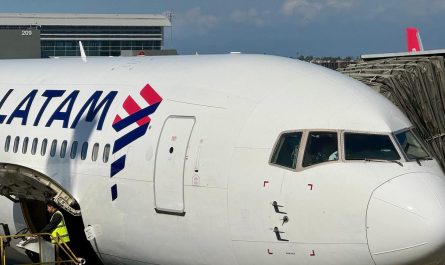On July 10th, a new “baby volcano” was born when a volcanic explosion in Litli-Hrtur in south-western Iceland caused fissures to emerge in the Earth.
The Earth split open on the afternoon of July 10th. Molten lava and gas plumes began erupting from three fissures located to the north-east of the base of Litli-Hrtur, a small peak on the Reykjanes Peninsula in south-western Iceland.
Litli-Hrtur (which translates to “Little Ram”) is a part of the Fagradalsfjall volcanic area that erupted in March 2021 and August 2022 after a break of almost 800 years; more than 12,000 earthquakes had been recorded in the days leading up to the eruption.
At first, the cracks extended for more than a kilometer and spewed molten rock in three distinct streams. By dawn, two of the cracks had sealed, leaving a single, elongated cone as the only outlet for the lava. Some have called this “Earth’s newest baby volcano” because of how quickly the crater developed as the lava collected. The crater has risen to a height of around 30 meters in just a week, and it is getting taller every day.
The first night’s outpouring of lava was so massive (up to 50 cubic meters per second) that it spread in all directions, setting fire to the dry moss that blankets this desolate area.
The poisonous smoke and gases from the volcano made it unfeasible for visitors to the site for several days as strong winds fanned the moss fires over a large area. Water was dropped from helicopters in two-ton batches to douse the flames, and water was also transported in tanks for use by firefighters on the ground. After the fires were contained and the winds shifted to the north-west, a route was opened on July 17 and people began pouring in to witness this once-in-a-lifetime phenomenon.
Local officials examine the safety of a day’s visit to the volcano and advise the public daily on whether or not it is advisable to travel there.
Guests are currently welcome to visit the attraction. A designated parking location (P2) has been established, from which hikers and cyclists must travel 9 kilometers along a rather flat path to reach the main viewing spot; the final kilometer of this journey is rocky. The erupting crater, visible through the thick heat haze, is less than a kilometer away after you arrive. Even at this distance, the erupting lava fountains make for a stunning sight, especially at night when they stand out against the blacker skies (although it doesn’t get fully dark here until mid-August).
The trail is currently available from 9:00 am to 8:00 pm, and the entire climb, including breaks and taking in the sights, will take you at least five or six hours. Only those in good physical condition and with sufficient supplies of water and trekking gear should attempt it. No infrastructure is present, however Search and Rescue crews are always nearby.
Geologists need to be confident no new fissures will open before they’ll let tourists approach closer to the crater, thus access to the viewing spot could shift over time. A substantial portion of the crater collapsed in the early hours of July 19th, spreading lava over a region to the west of the crater quite quickly. The behavior of the lava during the 2021 eruption was highly variable, with other fissures appearing weeks after the initial one.
At the lava field’s edge, I ran upon Jeroen Van Nieuwenhove, a Belgian professional photographer currently based in Iceland. Since the initial eruption of Fagradalsfjall in March 2021, he has been documenting the eruptions. He assured me that this year, as every year, seeing a volcano explosion in person would be an unforgettable experience. Very few people get the opportunity to watch a new landscape being formed right in front of their eyes, he remarked. I couldn’t be happier that the eruption took place against the gorgeous backdrop of the pointed Keilir hill. The hike is longer and more strenuous than in years past, but the destination is well worth the effort.
A PhD student at the University of Leeds, Laura Wainman, was headed to Iceland “within minutes of the eruption starting” to examine the dispersion of environmentally reactive trace components in volcanic plumes. To better understand the composition and size distribution of particles within the volcanic plume and how they are transported through the atmosphere, she is collecting samples from the plume itself.
Since the area had been shaking with intense earthquakes for the past six days and the magma was known to be extremely close to the surface, she said it was not surprising that Iceland’s newest eruption and the development of this new infant volcanic crater occurred. The quakes this year began on July 4th, according to Wainman, and they were triggered by a fresh magma intrusion between Fagradalsfjall and Keilir, which is just to the north-east of the previous eruption sites in 2021 and 2022.
Majestic lava flows are being formed as the crater’s lava tongue gently moves downhill. The a’a kind of lava found here is basaltic in composition and has a rough, brittle surface because it is made up of fractured lava fragments called clinker. Red hot spots are revealed in the otherwise gray and black lava when pieces break off and fall to the ground. As it advances, there is often a terrifying crackling, like glass breaking, that can be heard.
Wainman remarked that witnessing an eruption “never gets any less special.” After we’ve finished collecting samples, we like to sit back and take in the awesome sight of the volcano. What draws us to study volcanoes, I believe, is a mix of curiosity and mild anxiety in the face of this enormous power of nature.
Every day, more and more lava is pushed into the air, adding to the height of the newborn volcano crater. The lava flow has slowed significantly since the initial night, and is now expected to be nine cubic meters per second per day, which is comparable to the 2021 eruption but significantly lower than the initial night’s output. It’s likely that we may see more instances when parts of the crater wall collapse if activity remains high, as there is a maximum height beyond which the crater becomes intrinsically unstable. While the system is in constant flux, Wainman assured us that “lots of people are working on modeling different scenarios for where the lava flows might travel.”
She also mentioned that nobody knows how long the eruption will remain; the two before this one lasted for only three weeks in 2022 and six months in 2021. To be sure, “so far, the Litli-Hrtur eruption has behaved in a similar way to the eruptions seen in 2021 and 2022,” Wainman added. “At some point, we may see activity begin to slack off, and then we may see something like the eruption in 2021, when there were sporadic intervals of activity until the eruption finally halted. We’ll have to keep an eye on this eruption to see how long it lasts.




